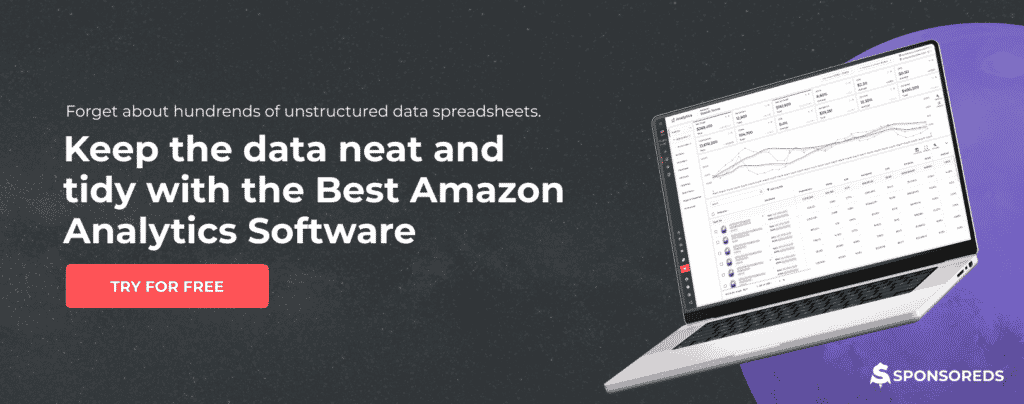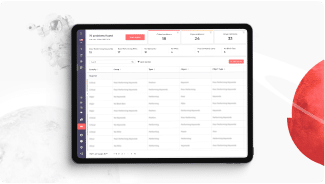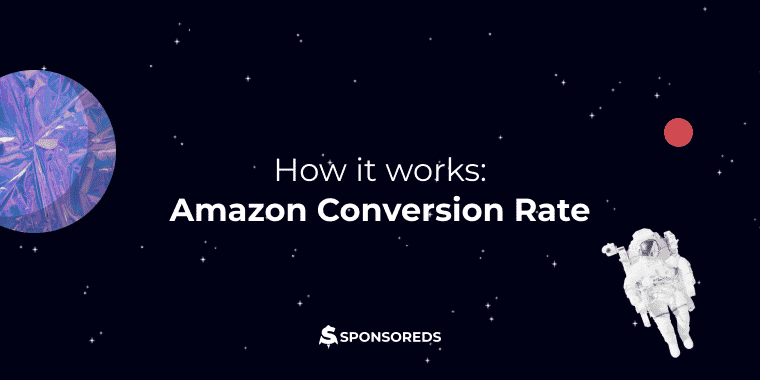Sellers often pay attention to the total sales they’ve accumulated. But, although important, there sure are other metrics to consider, some even more crucial than you may imagine. One example of such metrics for PPC advertising on Amazon is the conversion rate or CVR. In this competitive environment, you fight not only for the number of sales you get but also for the loyalty of your customers. So a good Amazon Conversion Rate will indicate how successful you are at keeping your customers engaged in your products.
Furthermore, gaining conversions takes a lot of work. It requires a great deal of knowledge and optimizations. Therefore, we at Sponsoreds have created this guide to help you master this vital Amazon PPC metric. So let’s get into it!
Table of Content
- What is The Amazon Conversion Rate?
- What is a Good Conversion Rate on Amazon?
- How to Check The Amazon Conversion Rate?
- How to Improve your Amazon Conversion Rates?
What is The Amazon Conversion Rate?
To start, we have to define what “conversion” is. In this context, it’s a synonym for “sales.” So, as opposed to CTR, which measures how effectively your ads draw new customers, the Amazon PPC conversion rate shows how well your ads or listings perform concerning enticing people to buy your products.
Conversion rate (CR, CVR) means the number of desired actions divided by the number of clicks and multiplied by 100 to receive the percentage value. It is important to note that “desired actions” in the above formula translate to the number of orders/sales regarding Amazon’s statistics.

Many third-party Amazon PPC management tools can also fulfill the role of a conversion rate calculator. As a result, using them significantly facilitates your day-to-day operations.
What is a Good Conversion Rate on Amazon?
As it usually stands in the Amazon business, there is no universally desirable conversion rate. The optimal value fluctuates between product categories. The general goal is to achieve between 10% and 15% CVR. That would be a safe bet.
However, you have to be wary of the quantitative aspects of the Amazon CVR. For example, having a 66% CVR might sound decent on paper, but if this number stems from low sales, it isn’t that great of a deal. Conversely, the larger your listings become, the more often you may be satisfied by lower CVR.
What is the Average Conversion Rate for an Amazon Affiliate?
Amazon Prime affiliates enjoy many benefits, from faster delivery to special deals. So it’s no wonder Amazon Prime members want much more significant figures than their non-Prime competitors when CVR is concerned. According to the research performed by Millward Brown Digital, Amazon affiliates enjoy a staggering conversion rate of 74%. That’s almost six times higher than this platform’s “normal” CVR. Although all of this can sound like an easy way to succeed, this route is quite challenging.
How to Check The Conversion Rate on Amazon?
For such an essential metric, it’s astonishing how deeply you have to discover your conversion rate on Amazon. Here’s the algorithm:
- Find “Reports” => “Business Reports.”
- Click the “sales and traffic” section.
- Look for the “Order Item Session Percentage.”
- This is your CVR.
Decide how you want the data grouped: all the products simultaneously or by-product. For the latter, search for “by ASIN” reports.

How to Improve your Amazon Conversion Rates?
Amazon CVR directly correlates to the number of sales you receive and indicates the effectiveness of your different PPC campaigns. A high CVR also shows Amazon that you’re worthy of more traffic redirected to your listings, as you profit on Amazon more than your peers.
Here are some tips on how to improve your Amazon conversion rates.
Finding New Keywords
Discovering relevant keywords is an essential part of boosting your CVR. It’s primarily done through Ahrefs, Google AdWords Keyword Planner, or other third-party keyword research tools. Having found these relevant keywords, you should add them to your product title, bullet points, and product description. This will increase your products’ visibility. Hence, the more significant traffic brought to your listings and better sales.
Automated campaigns via PPC management tools are highly recommended here, as they incorporate their AI to find new keywords and evaluate their relevance. Please see our Ultimate Amazon PPC guide for more information on this topic.
Better Product Descriptions
Optimizing your listings is often neglected by sellers on Amazon. Yet it is crucial in gaining your potential customer’s attention. The information presented therein is the primary factor influencing the customer’s decision. As such, your product descriptions must be:
- Simple enough to read and understand
- Provide sufficient information
- Fancy enough to make the customer buy your product
Optimized Bullet Points
Nowadays, people are in a state of perpetual haste. Therefore, they don’t have time to read into lengthy descriptions, however well-designed they are. Bullet-point will be your saving grace in this case. Use them to highlight your product’s essential features, but avoid overusing them. About five bullet-point tends to be enough.
Also, consider adding a direct call to action bullet points like “Order right now,” as it positively impacts the shoppers’ decisions.
Enhanced Visual Experience
Images are the first thing that draws the customer’s attention to your product. If the pictures are relevant and high-quality and presented against a white background, it is more likely that the shopper will stay longer on your listing and end up making a purchase. This and other elements of the A+ content define how appealing your product looks.
Price Adjustment
You may think a lower price will inevitably draw more customers in, but it’s not entirely true. Slight adjustments to your price can attract some customers; however, a high-priced quality product is also a thing on Amazon. As a result, your competitors may use this marketing strategy to their advantage. So don’t seem cheap to your potential customers.
In this regard, we advise the modest use of coupons and discounts. Customers greatly enjoy those. It also allows new customers to find your products via such discount periods.
Foster Bonds Between You and The Customers
You’ve established a bond as soon as the shopper buys your product. Care deeply for that link, as they can serve as means of further promoting your products.
Maintain contact with your customers via automated emails, but do not overwhelm them. Find a delicate balance between the two extremes.
Send the buyer an email expressing your gratitude and readiness to receive feedback after a new purchase. Provide them with a review link so that you receive another valuable metric and they can voice their opinions and concerns about the product.
Finally, emails are the best way to send discount codes to your customers. It again underlines the importance of that particular customer to you and incentivizes a second purchase.
Conclusion
Let’s stick to the basics: Amazon Conversion Rate is an essential metric to take into account when devising your Amazon PPC strategy. It greatly depends on your product category and your goals to stay profitable. If you want to measure the efficiency of your PPC campaigns, follow the rule: the higher conversion rate on Amazon, the better PPC performance on your listings.
Increasing Amazon conversion rates in-house may seem challenging and require a detailed roadmap. That is where our unique software comes to the spotlight, and is ready to assist. We will take good care of your CVR; meanwhile, you can delve into new product launches and creative processes. Please, contact us to get more details.

